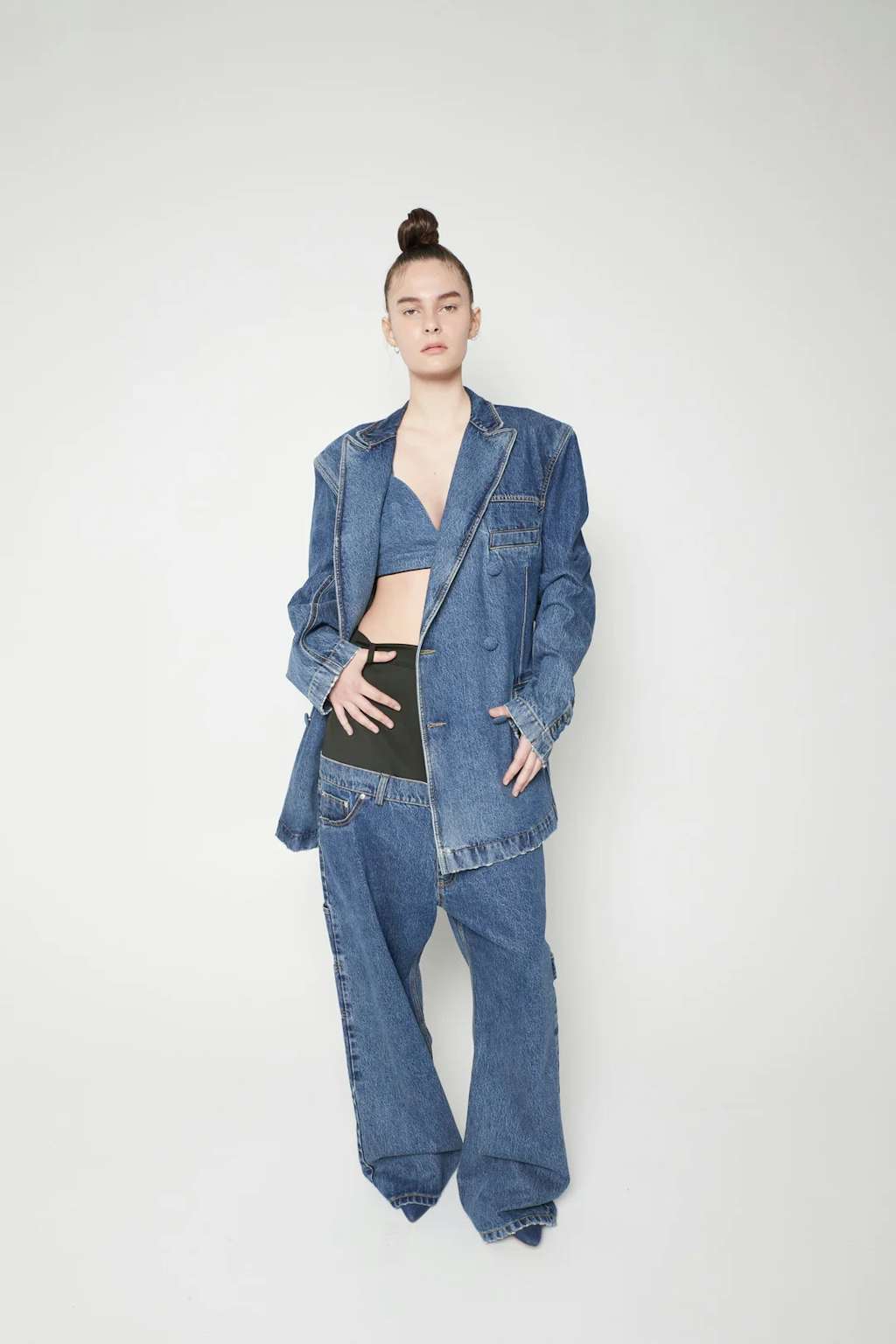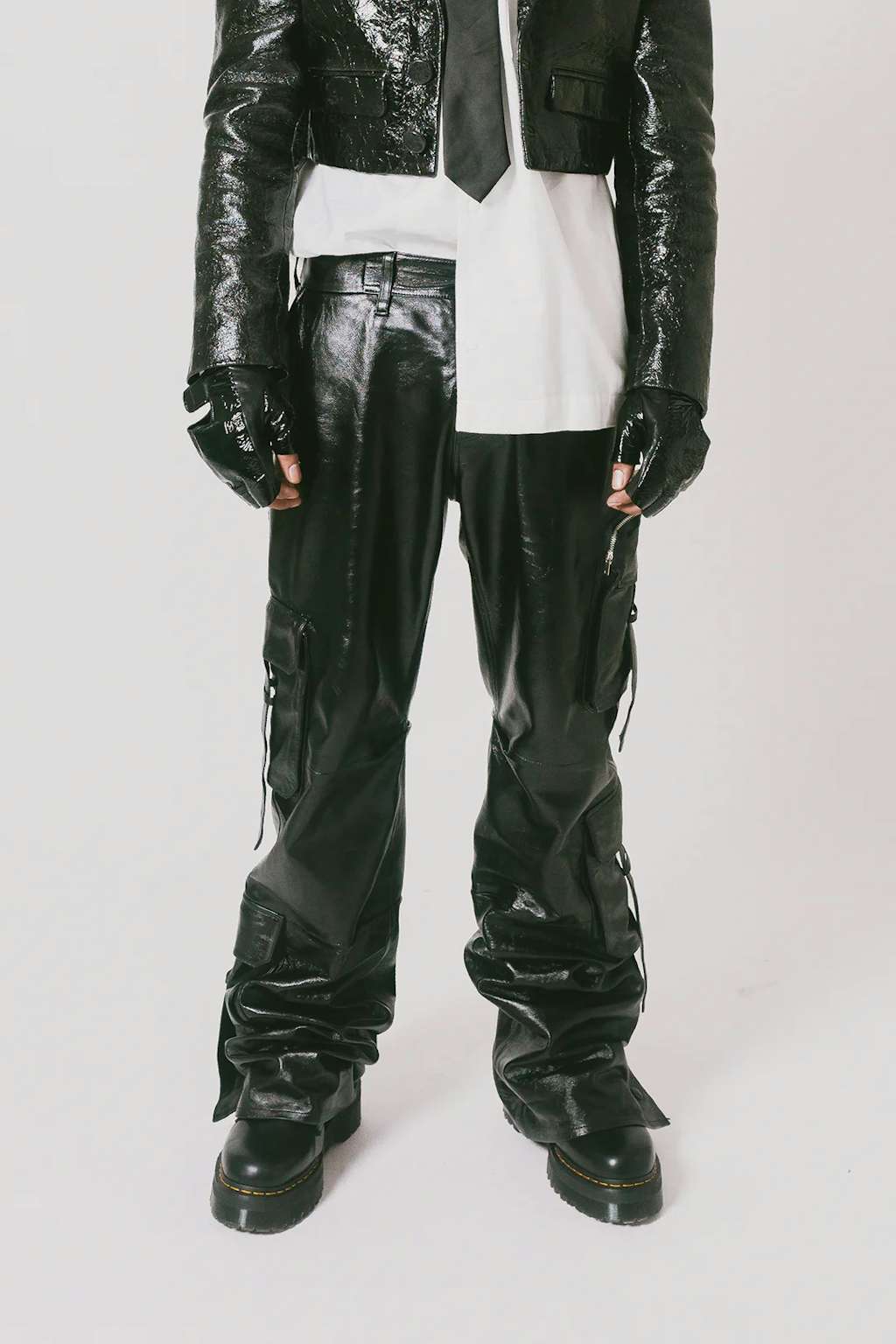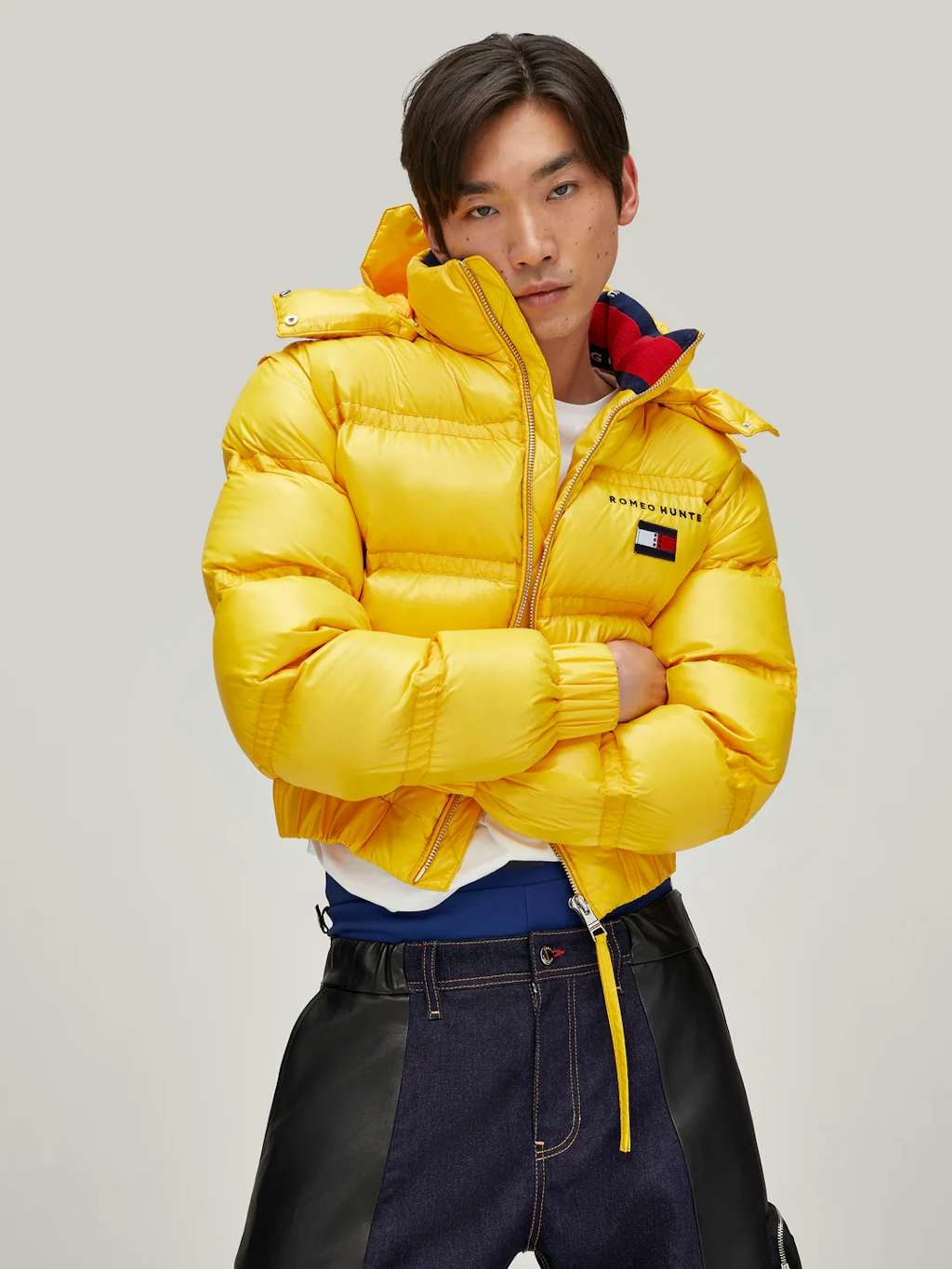
West Indian, Brooklyn born designer Romeo Hunte launched his namesake brand in 2014. He drew inspiration from the uncut activity he saw from outside his Brooklyn apartment during the 1990s, namely neighborhood residents sporting oversized, saggy jeans and hoodies while shooting dice on the corner. His life and aesthetic were also influenced by music videos from the same era; just think of the Ruff Ryders, Notorious B.I.G., Foxy Brown, and Lil Kim for reference. His Barbadian Bajan mother prevented him from wearing sneakers as a child which would force him to have to decide between a shoe or a boot before starting middle school; thus, depriving him of true self-expression through clothing.
Fast forward a few years…. Romeo, the high school athlete, break dancer and DJ, somehow found his way to The Fashion Institute of Technology after teaching himself how to sketch and draw at the age of 13. He attributes his increased interest in design to the late editor André Leon Talley. Although basketball was his first love, his short stature wasn’t conducive to successfully making it to the NBA.
Today, Romeo, the father who credits his mother and daughter for his main reasons for launching his namesake brand, is a full-fledged designer who has been featured in Ebony, Forbes, Vogue and has made appearances on national television but most impressively at the Met Gala. Zendaya was one of the first celebrities to be spotted in his designs soon followed by Beyoncé and even Former First Lady Michelle Obama who Romeo cherishes dearly. Lewis Hamilton, Vic Mensa, Chris Paul, and Nick Jonas are just some of the men who’ve been seen wearing Romeo Hunte.
In continuation, Romeo, who is widely known for his signature buffalo check, which is frequently featured within his collections, reflects, and reacts to the support he has and has yet to receive, his motivations, ongoing relationship with designer and mentor, Tommy Hilfiger and more.
Why did you want your own label?
When I was younger, I had a wide variety of amazing concepts and ideas. In truth, I prefer concept design and building the collection from there. At the time, I felt that working as a designer for a brand like Nike or Timberland was unreachable. I had the impression that those opportunities were non-existent for me. It wasn’t that I didn’t want to, but not too long ago, it was challenging to get internships and/or design work for one of the brands or designers who had inspired me. I was aware could bring a lot to the table wherever I was, but before I could approach one of those brands, I would need to build a portfolio and establish my personal brand further because the initial questions they would ask me were “Who’d you work for before?” and “Where’s your body of work?” Doing things on my own felt easier and more realistic.
Where did the capital come from? How was the procedure carried out, what paperwork was required and what measure of time did it require?
Initially I had no resources, but just by being present in the right places at the right times and interacting with the right people, I was able to receive recommendations from previous internships for factories that were willing to produce my ideas and samples. Although this may sound cliché, I only had a little cash which I had saved up from my then personal shopping job. I had only $5000 to launch the brand. I also created custom bespoke items for select clients which also contributed to the increase in incoming capital. I really appreciated that because once they understood what I was trying to accomplish, they approached me with a purpose because they wanted to wear and support my brand but also invite me to special invite only/VIP events.
While attending these events, networking was very important to me in building the brand. It happened organically because people were either drawn to me or my outfit. In terms of the procedure, the initial step was registering my brand’s name and logo; once your paperwork has been submitted, it typically takes between eight and twelve months for it to be approved. Upon approval, you can start moving forward to the next steps of the process.




